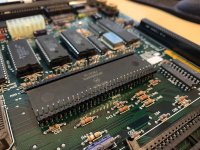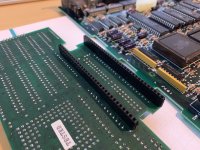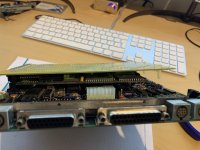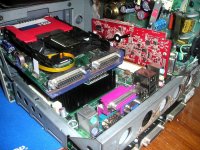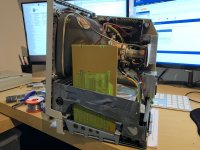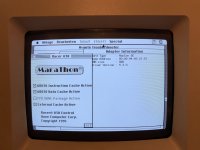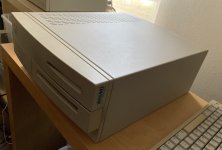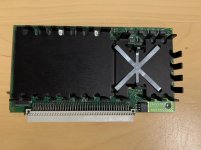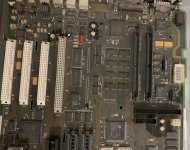Found this 50€ SE/30 on eBay and the breakout panel on the back screamed Asante NIC.
It came with an Asante NIC indeed but one I have not yet seen before.
It does not have the PDS passthrough one would expect to see on there:
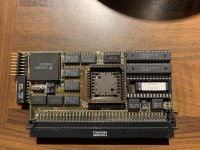
The SE/30 itself is in decent condition. Some yellowing, no battery disaster, no heavy burnin on the crt, some corrosion due to caps.
Seller said it doesn't work - I didn't even try it yet. Got the caps off the board and gave it a run in the dishwasher.
I'll get new caps on there and see if it's good to go already afterwards. It might not - a few vias look like they might have been eaten away by cap goo.
Still a steal at that price even if it needs some work. The bucket suggests it once was an SE that has been upgraded because it has the SE/30 label put over the original SE one.
Soon Gotta find a new way to stack those SE/30s to squeeze some more of them into the limited storage space I have...

